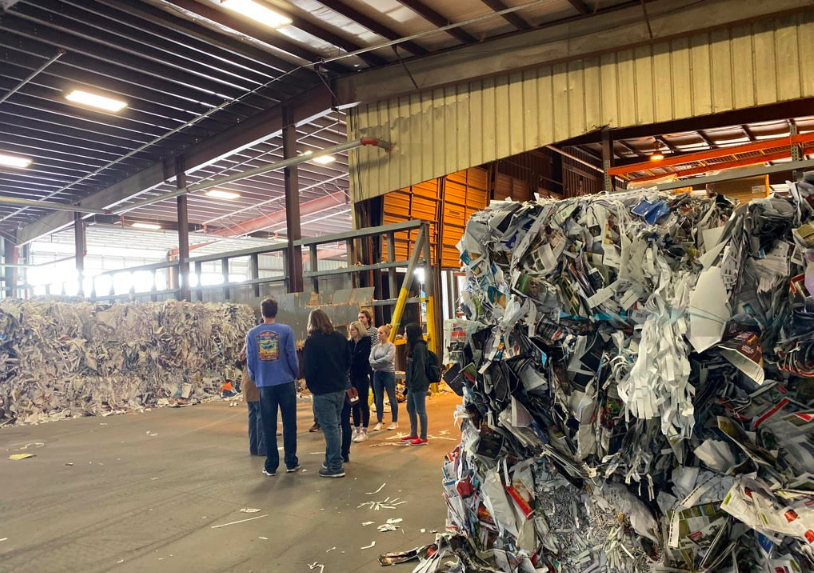NDSU Sustainability club tours Minnkota Recycling Center

NDSU’s Sustainability club gets a tour of the Minnkota Recycling Plant.
We arrived at Minnkota Recycling Plant in high spirits about to get a tour from Mary Aldrich, the Sales Manager & Certified Secure Destruction Specialist at the plant. Minnkota is widely known for the company that “processes recyclable materials for the cities of Fargo and Moorhead.” When entering the facility, the first thing you’ll see is where recyclables are separated; bins are lined up against the wall and have different labels illustrating every recyclable good.
Aldrich began to explain the difficulties Minnkota has been facing over the last two years. The residents of Fargo are in the process of having to pay more for their recycling services. Currently, Fargo residents are paying three dollars a month, the price change would add an extra dollar to the service, making it four dollars a month that the Residents of Fargo would pay for recycling service.
City representatives were upset with the news and have made it known to Minnkota, that a raise of cost to an extra dollar a month was just too much. Mary made it clear to us that she was a businesswoman and that at the end of the day, recycling was a business. The only reason for its existence was because there was money to be made in repurposing used materials into raw resources that can be remanufactured.
Recently, the trade war with China has taken a large toll on the industry with a 25 percent tariff put on paper goods for both imports and exports. This compounded with the Green wall that banned recycling exports from the United States to China in 2017, has made the costs of recycling rise.
Tariffs have successfully driven down the demand for paper products, a warehouse is often filled with bails of recycled paper products that were once sent to China. China used to buy back recycled paper products to make boxes and packaging then ship them back to the United States full of goods. It was a well-balanced ecosystem, but the tariffs have destroyed this delicate process. Paper mills have begun to shut down as there is no longer enough demand to stay in business.
With paper products aside, the largest issue with our recycling exports is the numerous contaminants. The degraded efforts of recycling habits have caused this issue. Contaminants were so prevalent that it got to the point, where the United States was basically sending bails of trash overseas.
Approximately 30 percent of the United States recycling was being exported and 15 percent of that original amount exported was sent to China. Much of what was sent to China ended up in a landfill because the contamination levels were too high. In the mid-west, we typically never export our recycling and facilities are equipped with recycling what’s collected.
Contaminants also affect recycling efforts in the Midwest. According to our local Minnkota facility, 18 percent of plastics are too contaminated to be recycled and end up being sent to the landfill. Aluminum cans are the most efficient form of recycled material with the item having an 87 percent recyclable rate. All the recyclables are sorted at the facility then bailed up and shipped across the Midwest to be made into new products.
Manufacturers of products purchase the materials to be melted down and turned into other products. For example, aluminum cans are melted down to be directly made back into beverage cans. Milk jugs are shipped be made into toys, decking, fencing and composite lumber and soda bottles will be sent to be manufactured into carpeting.
If we want green initiatives to succeed, we need to start being more aware of our recycling habits. Knowing what can be recycled and how plastics should be prepared is the best way to support a greener future. After China stopped accepting our recycling, some major U.S. cities started incinerating their recycling to produce electricity. This is technically a way of recycling. Fumes are filtered before being released. Some say that it could be the best way to deal with garbage in the future. Landfills are filling and the space on Earth is limited, so we need a better way to dispose of our waste.
